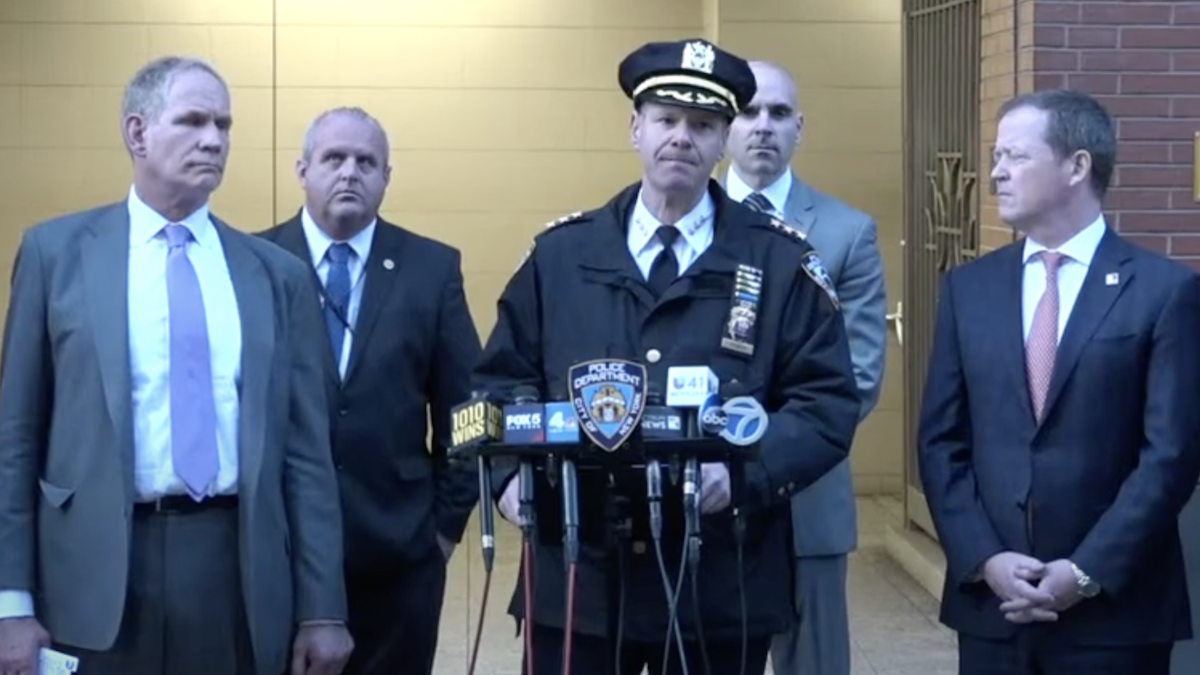
Last week, President Trump said the “full force and weight” of the U.S. government (including the departments of Justice and Homeland Security) would be used to fight a human trafficking epidemic. A staggering 45.8 million people are estimated to be currently trafficked or enslaved around the world, to the tune of hundreds of billions of dollars.
After drug dealing, trafficking of humans is tied with arms dealing as the second largest criminal industry in the world—and is the fastest growing. Therefore, raising public awareness is an important element to fight it. And the president is correct: the problem is not being talked about enough. So today, the United Nation’s Day Against Trafficking, let’s dispel some of the most common myths and misconceptions about modern-day slavery.
1. Victims Are Not Usually Abducted, Drugged, Or Trapped
But they are often deceived, isolated, and stigmatized by society. Further, those being trafficked are in plain sight to Americans every day. In fact, according to Dr. Mellissa Withers, assistant professor at the Institute for Global Health at the University of Southern California, “The hotspots for recruitment are homeless shelters, rehab facilities, jails, malls, and foster homes,” where victims can be exceptionally vulnerable.
According to her research and the Polaris Project, traffickers and victims often share the same national, ethnic, or cultural background, making it easier for them to understand and exploit the vulnerabilities of their victims. This includes Americans. Foreign-born victims frequently agree to come to the United States under false pretenses. Upon arrival, they are ashamed that they had hope for a job that was not real, but are now indebted to their captors, and almost always have had their identification taken away.
2. Slavery Is Happening In America
Modern slavery is not just something that happens to poor people in other countries, or those who are desperate to come to the United States and do not speak English. The U.S. State Department explains that, “The old way of slavery was that the boss really owned you … But now legal recruiters and employers work in tandem to deceive workers who, vulnerable and isolated in a strange culture, are forced to accept harsh terms. It is in that context that you have endemic forced labor today.” This means those trafficked are in all sectors, and represent all races, religions, cultures, ages, and sexes in the United States.
Human trafficking is right in front of us all the time, whether we recognize it or not. And American citizens (native and foreign-born) are at risk. In particular, at-risk teens who are susceptible to being homeless, runaways, and without family are most vulnerable to sex and labor trafficking. The Urban Institute claimed in their 2014 report, “Hidden in Plain Sight,” that 71 percent of labor trafficking victims from other countries entered the United States on lawful visas.
3. Sex Trafficking Is Only A Portion of Human Trafficking
According to Dr. Annalisa Enrile, associate professor at USC’s School of Social Work, “When we talk about trafficking, most people assume we are just talking about sex. But, there are actually more people enslaved through labor trafficking. Millions more. Impoverished communities, migrant workers, and children are all at risk for indentured servitude, forced labor, and other forms of labor trafficking.” This includes women and children who are exploited for labor, not sex.
Here in the United States, poor individuals are often manipulated into forms of labor slavery despite being legal workers. Although trafficking takes many forms, it is primarily located in industries such as: agriculture, fishing, construction, factory work, and domestic service. Hence, these vulnerable individuals often go unnoticed because they are largely poor, migrant workers isolated from others. This further means that those being trafficked have almost no access to health care.
4. Health Care Providers Are The Frontline, But Failing
Health care settings are commonly considered the most promising places to identify and serve victims of human trafficking. Health systems are often the only chance for escape. In fact, a 2014 study found that while being exploited, nearly 88 percent of sex trafficking survivors reported some kind of contact with health care. A 2017 survey found that more than 50 percent of victims had access to health care while being trafficked, but shockingly 97 percent of those indicated they had never been provided with information on resources or options while receiving care. This is consistent with Withers’ research. A recent study of hers concluded that “0% of doctors interviewed has learned about signs and symptoms of trafficking.”
This is devastating for the millions of individuals who need victim-centered, trauma-informed care and services. And the costs are devastating to all Americans. The health problems associated with victims of trafficking are the results of many, complicated factors, including: violence (physical and sexual), deprivation of food and sleep, stress, travel, and dangerous work. Because most victims do not have timely access to health care, mental and physical health problems are exacerbated before they can receive care. By the time they reach a clinician it is likely that health problems are well advanced, and cost the system billions of dollars.
5. Legal Issues Actually Complicate Matters
Surprisingly, suspicion of trafficking is not enough for legal action or child welfare for those under 18. Reporting requirements for places like hospitals require physical evidence of a crime, such as a wound or physical injury. Add this reporting criteria to how many victims are too afraid to leave their captors and beg for anonymity, and health professionals are in a tough position legally. Often, it is not necessarily always in the best interest of the victim’s safety to call law enforcement at a particular moment due to the nature of their captors.
Thankfully, legislation is being crafted throughout the country to fight human trafficking, but thus far has done little to curb the problem. In California, the Transparency in Supply Chains Act (TISC) forces businesses who work with suppliers or subcontractors that violate anti-trafficking laws to disclose violations and discontinue the contract.
But those minimal efforts are not well enforced nor replicated in other states. Hopefully, President Trump holds true to his verbal commitment to put the full force of law behind helping those enslaved individuals. With effort, the United States can make more than a dent in the business of trafficking.









